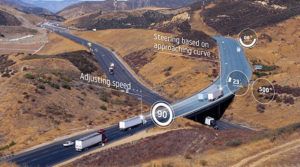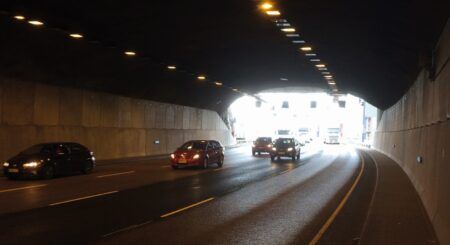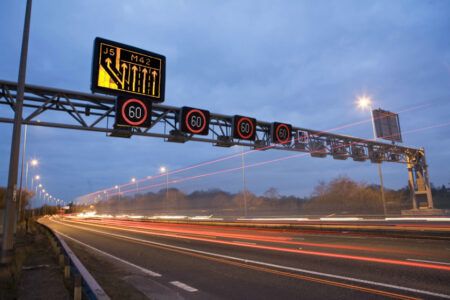Hitachi Automotive Systems Americas Inc. and location technology specialist TomTom are collaborating on a proof of concept for the development of a new real-time hazard service for navigation and Advanced Driver Assistance Systems (ADAS).
Through the collaboration, the companies will combine technological strengths to deliver real-time updates on the location of road hazards, detected by Hitachi Automotive Systems’ vehicle sensors, ECU (Engine Control Unit) and on-board DNN (Deep Neural Network), to navigation and ADAS applications running TomTom’s connected services. Hitachi will use its in-car sensor and edge processor technology to detect potholes and road debris, process that information, and send it to its cloud. This information is transferred to TomTom’s cloud-based fusion engine, currently used for its industry leading Traffic data service. TomTom would then deliver the hazard information to all navigation and ADAS applications running on its connected services in the same manner it delivers its traffic data, helping drivers make better decisions that save time, reduce stress and create safer roads.
“We’re excited that together with TomTom, we are helping to build a smart cities ecosystem,” said John Nunneley, SVP of design engineering SVP at Hitachi Automotive Systems Americas. “This solution will give vehicles the intelligence to detect, distribute and leverage real-time road condition data with other vehicles and municipalities to minimize delays, increase safety, and execute repairs.”
TomTom has also been working with Bosch and Daimler on the automaker’s Predictive Powertrain Control (PPC), a smart cruise control system for commercial vehicles. Trucks use TomTom’s highly-accurate ADAS Map and Bosch’s electronic horizon to automate driving functions on highways and, in Europe, on inter-urban roads as well. The system leads to a fuel reduction of up to 5% per vehicle and lower exhaust emissions. The latest PPC technology is available in the new generation of the Mercedes-Benz Actros trucks.
As the first smart cruise control system in commercial vehicles, PPC actively controls engine, brakes, and automated transmission. Due to TomTom’s ADAS map, the system is familiar with the topography, curvature, speed limit (including truck-specific limits) and traffic signs, meaning it can respond in a manner that delivers the most fuel-efficient performance. Bosch’s electronic horizon is used to integrate knowledge of the road ahead into the driving strategy of the new Actros, providing required map data per ADAS protocol in a new and innovative way allowing relaxed, safe and efficient driving.
Antoine Saucier, managing director at TomTom Automotive, said, “The new PPC technology is using our ADAS Map to assist with driving functions on interurban roads, which not only delivers a safer, more comfortable ride, but also significant fuel savings and a reduction in CO2 emissions.”





